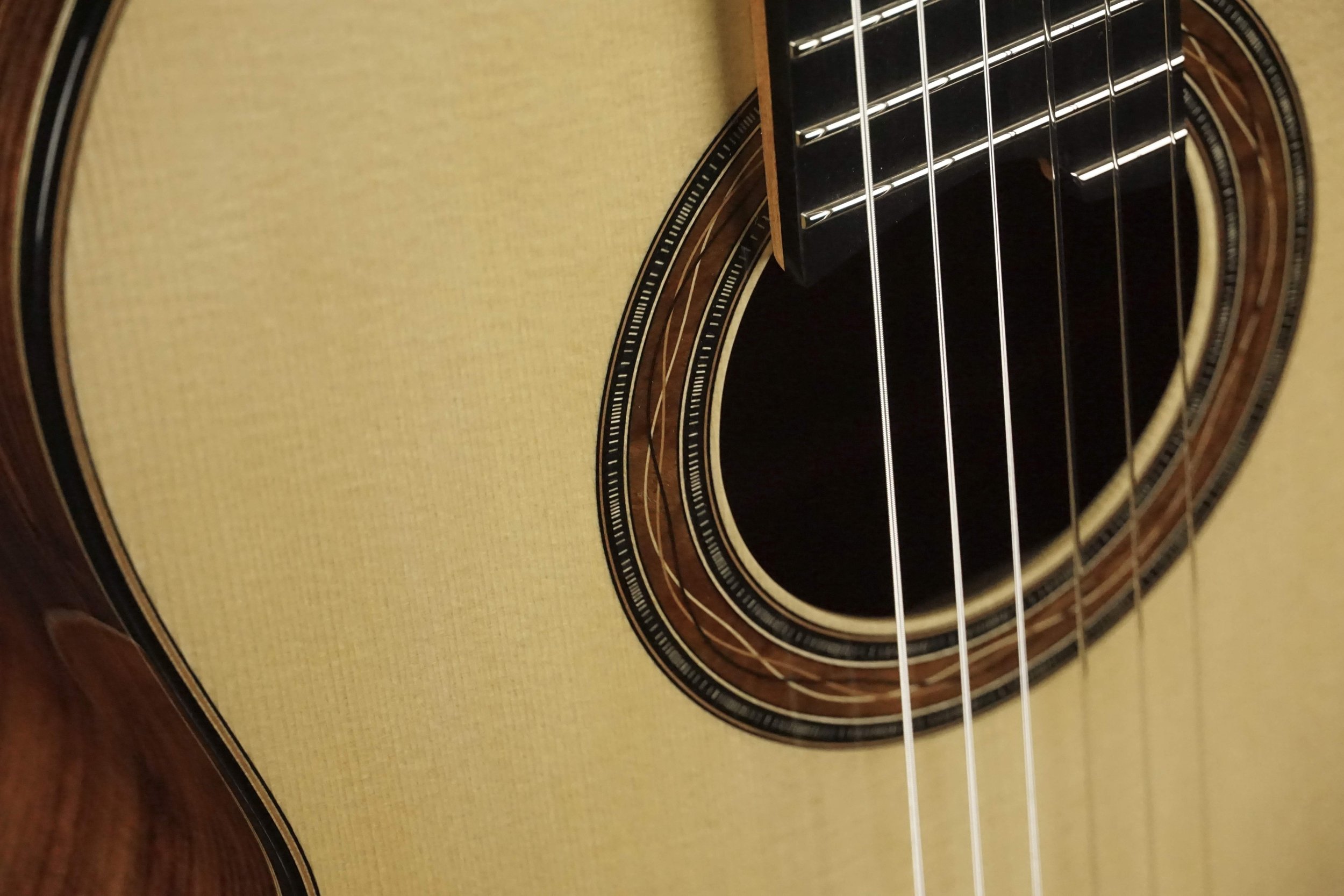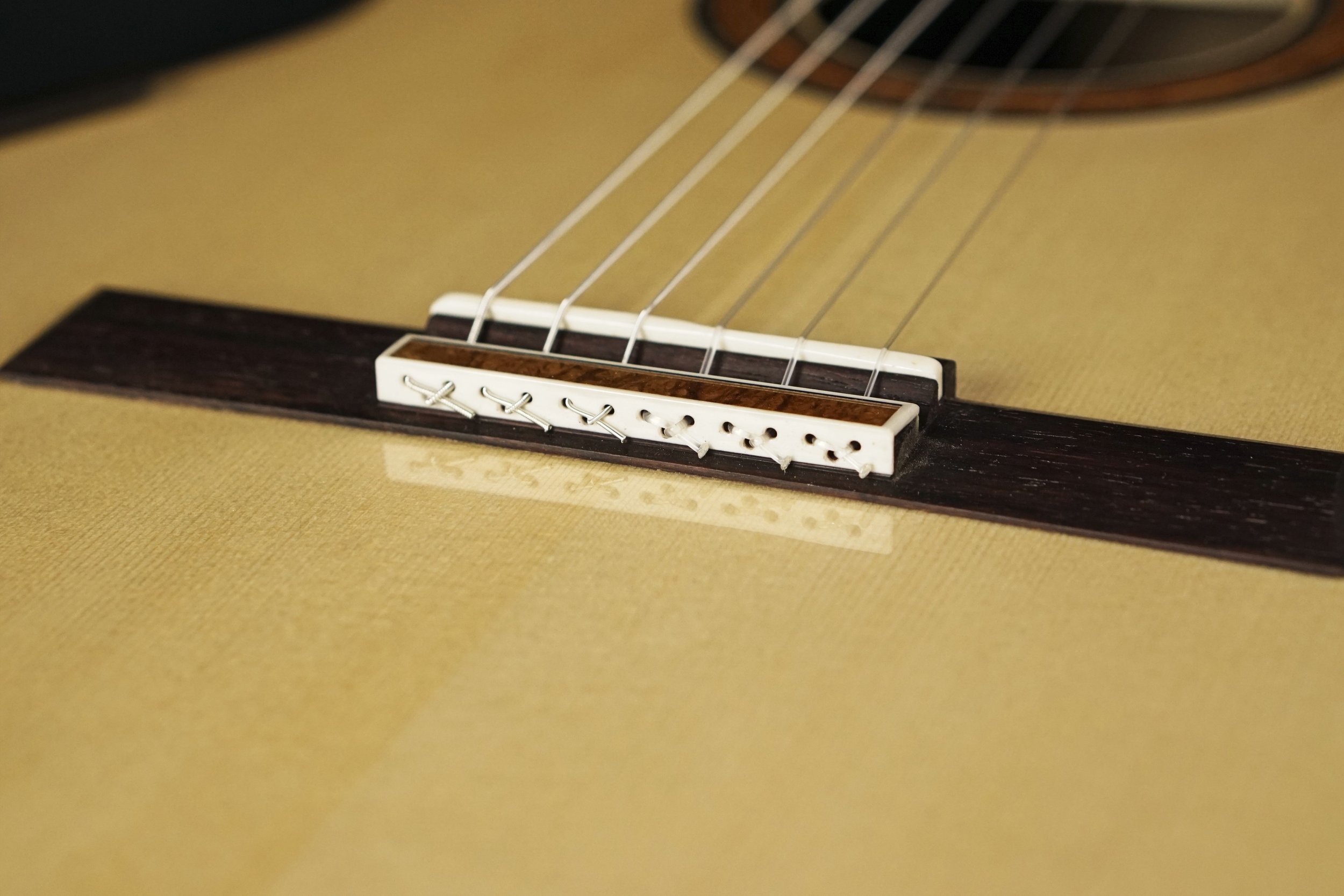I’m always busy with repairs and trying to get guitars made in a timely manner. I forget that I have a website that I should do something with. I haven’t posted anything new in quite a while so… here are more pictures to look at.
Looking back at the guitars from this past couple years I start to see some things that have developed. I started doing a compensated nut as standard practice on all my guitars. I used to do an across the board compensation at the nut by shortening the fingerboard about .020” from the theoretical zero fret but I’ve really liked doing and individual string compensation lately. I feel like this is the only way to get a nylon g string to intonate well.
I built an all North American wood guitar in which much of it was made out of Osage Orange wood. It’s wonderful tonewood. I ended up using it for the back and sides, fingerboard and bridge of this guitar. The Cherry wood neck, bridge and fingerboard got black stain. I do love the look of a black lacquered neck. Even though it got a matte finish, It looks akin to a guitar from the romantic era.
Trends…
I made quite a few guitars with arm rests or bevels. It seems to be one of the most popular additions to a build. I’ve been doing the magnetic sound port covers lately as well. It is a nice feature to be able to slide the port fully open, fully closed or something in between. I think I’ve been making more and more elevated fingerboards as well.














I started doing my “new waves” rosette with guitar no. 100 and customers really seem to like that. It’s within the same theme as my mosaic wave but now with a transverse and compression wave depiction. I feel like it is overtaking my mosaic rosettes in popularity. I’m doing more and more of the 18 hole tie blocks as well. It is a nice clean look and there isn’t the chance of a whiplash top strike like can occur with the 12 hole. I think the only downside may be a slight bit more difficulty in removing the old string after it has been locked into the numerous turns.
